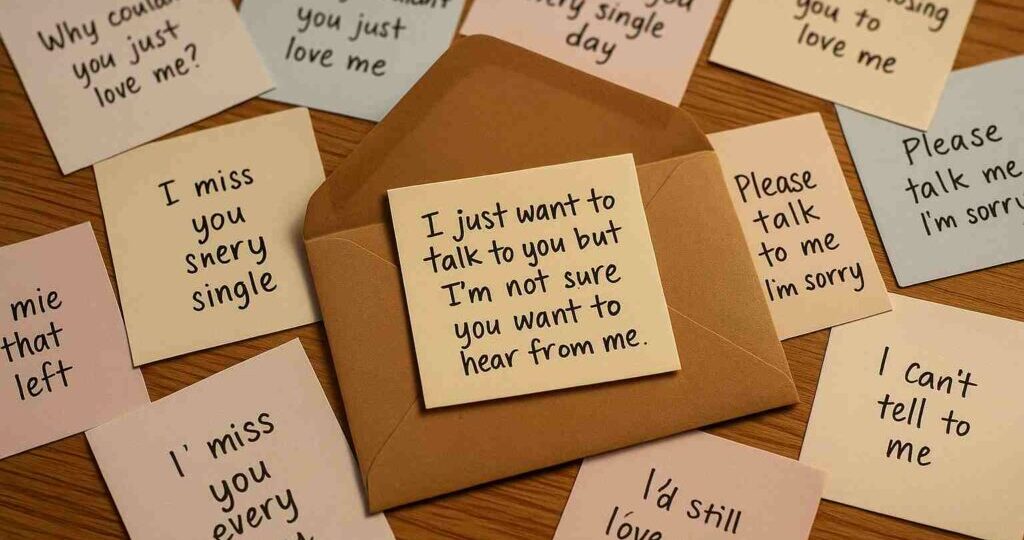The Psychology Behind the Unsent Project: Why People Share What They Never Send
October 20, 2025 | by IoT Development Company

Introduction
Every person carries thoughts that were never shared. Words that linger in the mind long after the moment to say them has passed. It might be love that went unspoken, an apology that felt too late, or anger that was never expressed. These quiet emotions build inside, shaping our inner world.
The Unsent Project, created by artist Rora Blue, became a global space for releasing those hidden emotions. It invites people to write messages they never sent, often directed toward someone important from their past. The project has gathered millions of anonymous submissions, each message a window into a private emotional truth.
What makes this project so powerful is not just the words, but the psychology behind why people choose to share them. The act of writing what we cannot say aloud offers comfort, closure, and connection. It reveals how deeply human it is to need expression, even without a listener.
The Concept of the Unsent Project
The Unsent Project began as a collection of text messages written but never delivered. Each message is paired with a color chosen by the writer to represent the person it is meant for. Over time, it became an emotional archive, showing the range of human feeling — from love and regret to anger and forgiveness.
What draws people in is its simplicity. Anyone can write. There are no names, no expectations, and no replies. This absence of identity and outcome is what makes it safe. It gives people permission to be completely honest.
From a psychological point of view, this freedom to express without consequence opens the door to self-awareness. It helps people process emotions that were once too heavy to face.
The Human Need to Express Emotions
Psychologists have long understood that expressing emotion is essential for mental balance. When feelings are repressed, they do not disappear; they often return in the form of anxiety, sadness, or physical tension.
Writing allows those emotions to move from the unconscious mind into clear awareness. It transforms confusion into understanding. By putting feelings into words, a person begins to organize and make sense of their inner world.
The Unsent Project works because it gives that expression a clear focus — a message directed toward someone who represents an emotional moment. It becomes a symbolic act of release. Even without sending it, the act of writing brings emotional relief.
Why We Avoid Sending Our True Messages
There are many reasons people never send their most honest words. Fear, pride, uncertainty, or the desire to protect others all play a part. Sometimes we hold back because we are afraid of rejection. Sometimes because the truth might cause pain. And sometimes, because the right moment has already passed.
From a psychological view, these unsent words become emotional residue. They stay stored in memory, resurfacing in moments of silence or stress. The Unsent Project provides a way to release them without confrontation.
By writing the message, a person acknowledges the emotion. By not sending it, they keep control over the outcome. This combination of release and safety is what makes the process so healing.
Anonymity and Emotional Honesty
Anonymity plays a crucial role in the success of the Unsent Project. When people are anonymous, they feel free from social expectations. They can reveal their true emotions without fear of judgment or exposure.
This form of writing becomes deeply authentic. There is no need to perform or hide. People can express love that was never spoken, anger that was never voiced, or regret that was never addressed.
Research in psychology shows that anonymous confession can reduce emotional stress. It helps the mind process guilt, grief, and longing in a safe environment. That is why the Unsent Project resonates so strongly. It is not just about sharing messages; it is about being seen without being identified.
The Role of Color in Emotional Communication
Each message in the Unsent Project is assigned a color by the writer. This detail may seem small, but it carries great emotional depth. Colors communicate feelings that words often cannot.
For example, blue might represent calmness, sadness, or reflection. Red might express passion or anger. Yellow can symbolize warmth, hope, or friendship. By linking color to emotion, the writer gives a visual voice to their inner state.
From a psychological standpoint, color acts as a secondary language of emotion. It bridges the gap between feeling and expression. When people choose a color for their message, they are giving shape to their emotions in a way that feels personal and meaningful.
The Search for Closure and Understanding
One of the most common reasons people turn to the Unsent Project is the search for closure. Emotional pain often comes from unfinished conversations or unresolved experiences. The human mind naturally seeks understanding, and when that is missing, the pain can linger.
Writing an unsent message allows a person to create their own closure. It becomes a symbolic ending, even if real-life closure is impossible. It is a way to say goodbye, to forgive, or simply to acknowledge what once was.
This process aligns with what therapists call emotional completion — the ability to recognize an experience fully, accept it, and move forward. It turns silence into resolution.
Collective Healing Through Shared Stories
What began as an individual exercise has evolved into a collective experience. Reading the Unsent Project messages creates a sense of connection among strangers.
Each message reflects a universal truth about human emotion. Love, loss, regret, and hope — these feelings cross all cultures and generations. When people see their own experiences reflected in the words of others, they feel understood.
This shared vulnerability fosters empathy. It breaks the illusion of isolation that often comes with pain. Knowing that someone, somewhere, feels the same can be deeply healing. It transforms private suffering into collective strength.
Why the Unsent Project Feels So Safe
Unlike social media platforms that often focus on perfection, the Unsent Project is built on imperfection. It welcomes pain, confusion, and unfinished stories. There is no competition, no comparison, only honesty.
This environment reduces emotional pressure. It allows people to be authentic without fear of rejection. That sense of safety is what encourages healing. It creates an emotional refuge where people can finally express what has been locked inside for too long.
Therapeutic Insights: How Writing Changes the Mind
Scientific studies on expressive writing show that it has powerful mental and physical benefits. People who write about emotional experiences tend to experience lower stress levels, improved mood, and even stronger immune function.
This happens because writing helps integrate emotional experiences into memory in a healthier way. It allows the brain to reframe painful events, turning chaos into clarity.
When applied to the Unsent Project, these findings explain why participants often describe a feeling of relief after writing. The act of putting emotion into words is itself a form of self-therapy.
Lessons from the Unsent Project
The psychology of the Unsent Project teaches us valuable lessons about healing and self-awareness:
-
Expression is essential for balance. Keeping emotions silent only makes them stronger.
-
You do not need to be heard to heal. Writing can bring peace even without an audience.
-
Vulnerability creates connection. Honest expression builds empathy, both for others and for yourself.
-
Closure is something you can create. You do not have to wait for someone else to give it to you.
These lessons remind us that communication is not always about being answered. Sometimes, it is about understanding ourselves more deeply.
Conclusion
The Unsent Project stands as a reminder that even words never spoken can heal. It shows that expression, not response, is the heart of emotional freedom.
By writing what we could not say aloud, we honor our emotions instead of hiding from them. We give our pain meaning and our silence purpose.
In a world where many people feel unseen or unheard, the Unsent Project proves that healing begins with self-expression. It transforms unspoken feelings into art, turning private pain into shared humanity.
Every message written but never sent is still a story told — a step toward peace, understanding, and emotional liberation.
RELATED POSTS
View all



